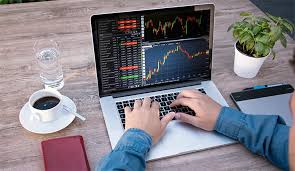
The Ultimate Guide to Forex and CFD Trading: Strategies, Risks, and Opportunities
In today’s fast-paced financial markets, trading foreign currencies and contracts for difference (CFDs) has become increasingly popular among both seasoned investors and newcomers. The potential for profit, combined with the ease of access provided by online brokers, has encouraged many to explore Forex and CFD trading opportunities. forex cfd trading Vietnam Brokers offer diverse platforms to help traders navigate this complex landscape.
Understanding Forex Trading
Forex, or foreign exchange, is the global marketplace for trading national currencies against one another. It operates 24 hours a day, five days a week, enabling liquidity and continuous market engagement. The Forex market is the largest financial market in the world, with a daily trading volume exceeding $6 trillion USD, providing ample opportunities for profit.
How Forex Trading Works
Forex trading involves pairs of currencies, where one currency is bought while the other is sold. Currency pairs are categorized into three groups: major pairs, minor pairs, and exotic pairs. Major pairs feature the most widely traded currencies, such as the EUR/USD, while minor pairs involve less popular currencies. Exotic pairs combine a major currency with one from a developing economy.
Key Concepts in Forex Trading
Understanding key concepts is crucial for effective trading:
- Pips: The smallest price move that can be observed in the exchange rate of a currency pair.
- Leverage: A tool that allows traders to control larger positions with a smaller amount of capital.
- Spread: The difference between the buying (ask) price and selling (bid) price of a currency pair.
- Margin: The amount of money required to open and maintain a leveraged position.
Understanding CFD Trading
Contracts for difference (CFDs) are financial derivatives that permit traders to speculate on the price movements of various assets without owning the underlying asset. These assets can range from stocks to commodities, indices, and cryptocurrencies, making CFDs a versatile trading instrument.
How CFD Trading Works

When trading CFDs, traders enter into an agreement with a broker to exchange the difference in the asset’s price from the time the contract is opened to when it is closed. If the trader believes the price will rise, they can open a long position; conversely, if they expect the price to fall, they can open a short position. This flexibility allows traders to profit from both upward and downward market movements.
Benefits of Forex and CFD Trading
Both Forex and CFD trading have unique advantages that attract traders:
- High Liquidity: The Forex market’s vast volume ensures that traders can enter and exit positions almost instantly, reducing slippage.
- Leverage: Traders can amplify their potential profits (and losses) through leverage, allowing them to trade with larger amounts than they possess in their accounts.
- Diverse Opportunities: With a wide variety of assets available, traders can customize their trading strategies according to market conditions and personal preferences.
Risks Associated with Forex and CFD Trading
Despite the enticing benefits, Forex and CFD trading carry inherent risks. Understanding these risks is crucial for anyone looking to trade:
- Market Risk: Prices can fluctuate rapidly without warning, leading to significant financial losses.
- Leverage Risk: While leverage can magnify profits, it also increases the potential for substantial losses, sometimes exceeding the initial investment.
- Counterparty Risk: The risk that the broker may default on the contract, especially in unregulated environments.
Developing Effective Trading Strategies
Successful trading requires a sound strategy tailored to individual goals and risk tolerance. Here are some popular strategies:
- Technical Analysis: This approach involves using historical price data, charts, and indicators to predict future price movements.
- Fundamental Analysis: Traders analyze economic indicators, interest rates, and geopolitical events that may affect currency prices.
- Scalping: A high-frequency trading strategy that seeks to profit from small price changes, requiring quick execution of trades.
Conclusion
Forex and CFD trading present numerous opportunities for profit, but they also require careful consideration of risks and an understanding of market dynamics. By developing sound strategies and leveraging the advantages of these markets, traders can navigate the complexities of Forex and CFDs successfully. Always remember that it’s crucial to trade with proper risk management practices and to choose reputable brokers to enhance your chances of long-term success in the world of trading.
